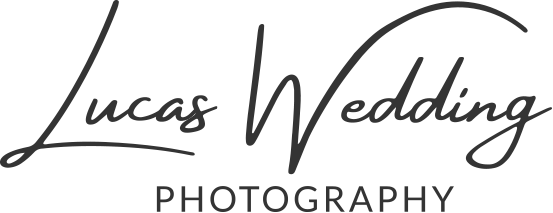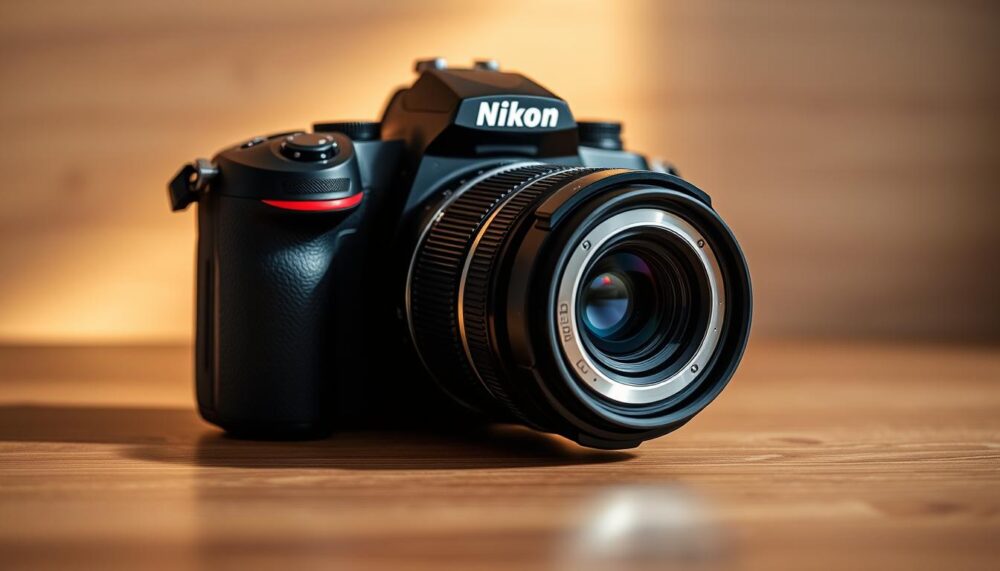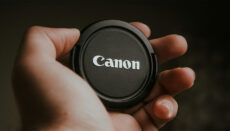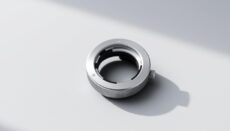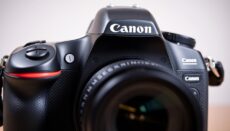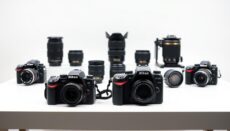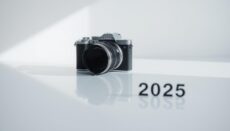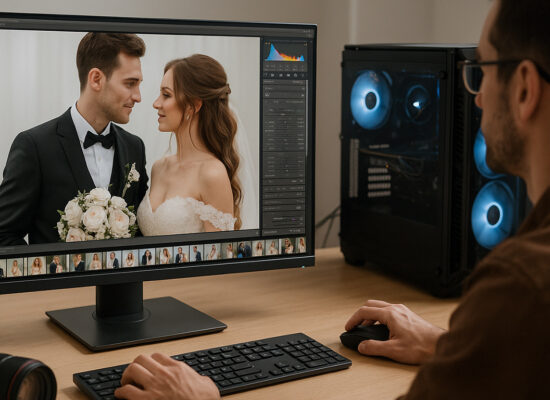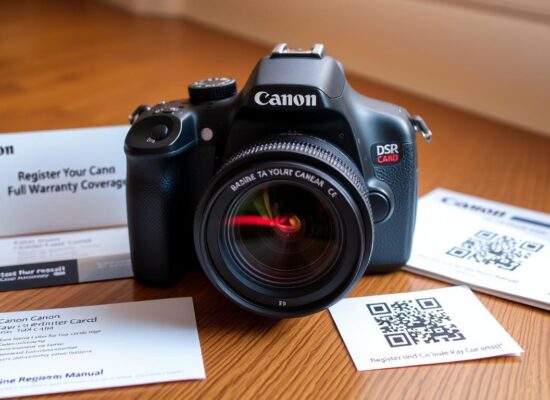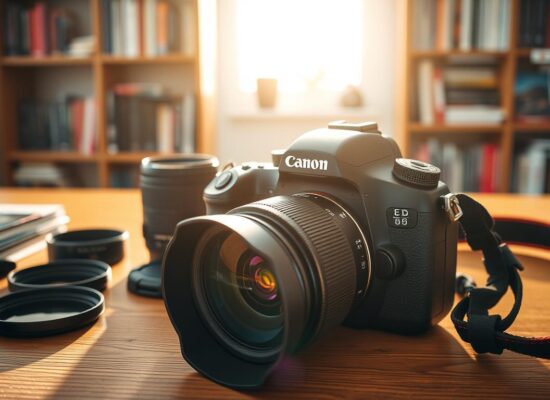Exploring the possibility of using a Nikon lens on a Canon camera is a common query among photography enthusiasts. While these brands operate on different mount systems, there are ways to bridge the gap. Third-party adapters often serve as a practical solution, enabling cross-brand functionality.
However, it’s essential to understand the limitations. Autofocus and electronic communication between the lens and camera may be lost, requiring manual adjustments. Despite these challenges, certain camera lens models, like the popular 14-24mm f/2.8G, remain sought after by Canon users for their exceptional performance.
This guide will delve into the specifics of mounts, adapters, manual operation, and performance considerations. Whether you’re a professional or a hobbyist, understanding these nuances can help you make informed decisions about your gear.
Key Takeaways
- Third-party adapters can enable the use of Nikon lenses on Canon cameras.
- Autofocus and electronic communication may not function seamlessly.
- Manual adjustments are often required for optimal performance.
- Specific Nikon lenses, such as the 14-24mm f/2.8G, are popular among Canon users.
- Understanding mounts and adapters is crucial for cross-brand compatibility.
Introduction to Nikon Lens Compatibility with Canon Cameras
Understanding how Nikon and Canon systems interact is vital for photographers. While both brands dominate the industry, their native mounts are fundamentally incompatible. This creates challenges for those looking to use Nikon gear on Canon camera bodies.
One key factor is the flange distance. Nikon’s F-mount has a flange distance of 46.5mm, while Canon’s EF/EF-S mount measures 44mm. This difference allows adapters to bridge the gap, enabling infinity focus when adapting F-mount lenses. However, Z-mount lenses remain incompatible due to their shorter flange distance.
Aperture control also varies between lens generations. Older manual lenses require adjustments via the adapter, while newer models may retain some functionality. This flexibility makes F-mount lenses a popular choice for Canon users.
Historically, the rivalry between Nikon and Canon has driven innovation. Yet, photographers often seek cross-system solutions to meet their creative needs. Understanding these technical nuances ensures better decision-making when mixing gear.
| Mount Type | Flange Distance | Compatibility with Canon EF/EF-S |
|---|---|---|
| Nikon F-mount | 46.5mm | Compatible with adapters |
| Nikon Z-mount | 16mm | Incompatible |
Are Nikon Lenses Compatible with Canon Cameras?
Photographers often wonder if mixing gear from different brands is feasible. The answer lies in understanding the technical aspects of lens mounts and adapters. All F-mount models can be used on Canon DSLRs with the right adapter, making cross-brand usage possible.
However, there are limitations. Autofocus and vibration reduction (VR) features typically become unavailable. This means photographers must rely on manual adjustments for focus and stabilisation. Additionally, EXIF data may not transfer, complicating post-processing workflows.
Differences between AI-S and G-type models also play a role. Older AI-S lenses often work seamlessly, while G-type versions require adapters with manual aperture rings. This distinction is crucial for achieving optimal performance.
In professional settings, cross-brand lens usage is common. Many photographers want use specific models for their unique characteristics, such as the 14-24mm f/2.8G. While electronic features may be lost, the optical quality remains unmatched.
| Lens Type | Compatibility | Key Considerations |
|---|---|---|
| AI-S | Full compatibility | Manual aperture control |
| G-Type | Requires adapter | Manual aperture ring needed |
Understanding these nuances ensures photographers can make informed decisions. Whether for creative flexibility or cost-effectiveness, cross-brand compatibility opens up new possibilities.
Understanding Lens Mounts: Nikon F-Mount vs Canon EF-Mount
The mechanics of lens mounts play a pivotal role in photography equipment. The nikon f-mount and Canon EF-mount are two of the most widely used systems in the industry. Their design differences directly impact cross-brand functionality.
One key distinction is the flange distance. The nikon f-mount has a flange distance of 46.5mm, while the Canon EF-mount measures 44mm. This 2.5mm difference allows adapters to bridge the gap, enabling infinity focus when adapting F-mount lenses to Canon bodies.
Historically, both systems have evolved to meet the demands of photographers. The F-mount, introduced in 1959, has remained a staple for Nikon. Canon’s EF-mount, launched in 1987, brought electronic communication between the lens and camera, revolutionising the industry.
Physical dimensions also differ. The F-mount has a diameter of 44mm, while the EF-mount is slightly larger at 54mm. Locking mechanisms vary, with Nikon using a rotating bayonet and Canon employing a pin-based system. These variations influence lens adaptability and optical performance.
| Mount Type | Flange Distance | Diameter | Locking Mechanism |
|---|---|---|---|
| Nikon F-mount | 46.5mm | 44mm | Rotating Bayonet |
| Canon EF-mount | 44mm | 54mm | Pin-Based |
Understanding these technical details ensures photographers can make informed decisions. Whether adapting lenses or choosing new gear, the lens mount system is a critical factor in achieving optimal results.
Using Nikon Lenses on Canon Cameras: The Role of Adapters
Adapters play a crucial role in bridging the gap between different camera systems. They enable photographers to use a nikon canon lens on a Canon body, expanding creative possibilities. However, not all adapters are created equal, and understanding their features is essential for optimal performance.
Types of Lens Adapters Available
There are two main types of adapters: mechanical and electronic. Mechanical adapters are simpler, focusing solely on physical compatibility. They are often more affordable but lack advanced functionality. Electronic adapters, on the other hand, include chipped systems that enable focus confirmation and aperture control.
Brands like Novoflex and K&F Concept offer premium options. These adapters are typically made from durable materials like aluminium or brass composites, ensuring longevity. Prices range from £20 to £170, depending on the features and build quality.
How to Choose the Right Adapter
Selecting the right lens adapter depends on your specific needs. For G-type lenses, ensure the adapter includes an aperture control ring. This allows manual adjustments, which are crucial for maintaining image quality. Chipped adapters are ideal for those who want focus confirmation, though they may come at a higher cost.
Material choice also matters. Aluminium adapters are lightweight, while brass composites offer superior durability. Weather sealing compatibility is another factor to consider, especially for outdoor photography. By evaluating these aspects, you can find an adapter that suits your workflow and budget.
Step-by-Step Guide to Mounting Nikon Lenses on Canon Cameras
Mounting a Nikon lens on a Canon camera requires careful steps to ensure proper functionality. Begin by attaching the adapter to the lens. Ensure it is securely fitted to avoid any wobbling during use.
Next, mount the assembly onto the camera body. Align the adapter’s locking mechanism with the camera’s mount and twist gently until it clicks into place. This ensures a stable connection between the lens and the camera.
Switch the camera to manual mode. This step is crucial as autofocus and electronic communication may not function when using cross-brand gear. Adjust the aperture ring on the adapter if available, ensuring proper exposure settings.
Focus via the viewfinder or live screen. Manual adjustments are often necessary to achieve sharp images. Take your time to fine-tune the focus for optimal results.
Safety precautions are essential. Always handle the lens and adapter with clean hands to avoid smudges or dust. Regularly inspect the mount for debris to maintain a clean connection.
If you encounter fitting issues, double-check the adapter’s compatibility with your lens model. Some adapters may require additional adjustments or tools for a perfect fit.
For long-term maintenance, store your gear in a dry, dust-free environment. Clean the electrical contacts periodically to ensure consistent performance. Following these steps will help you make the most of your cross-brand setup.
Manual Focus: Using Nikon Lenses on Canon Cameras
Mastering manual focus is a skill that enhances creative control when using adapted lenses. While autofocus may not be available, tools like focus peaking and magnification can significantly improve precision. These features are particularly useful for achieving sharp results in challenging conditions.
Focus peaking highlights in-focus areas with coloured outlines, making it easier to identify sharpness. Magnification tools allow you to zoom in on specific parts of the frame, ensuring accurate adjustments. Combining these techniques can streamline the process of lenses manual focus.
Wide aperture focusing requires careful attention. After achieving focus, stopping down the aperture ensures proper exposure and depth of field. This step is crucial for maintaining image quality, especially in low-light scenarios.
Canon’s focus confirmation chips can also aid in manual focusing. These chips provide visual or auditory signals when the subject is in focus, offering additional guidance. While not as seamless as native systems, they are a valuable tool for photographers.
Professional workflows often involve adapting to manual focus. By practising these techniques, you can confidently use adapted lenses to achieve exceptional results. Whether for creative flexibility or technical precision, mastering manual focus opens up new possibilities.
Aperture Control: Adjusting Settings Manually
Adjusting aperture settings manually is a skill every photographer should master. It allows for precise control over exposure and depth of field, essential for achieving professional results. Understanding how aperture systems work, especially with adapted gear, is crucial.
Historically, Nikon’s aperture systems have evolved significantly. Pre-1977 AI lenses feature manual aperture rings, allowing direct adjustments. These rings are intuitive and provide tactile feedback, making them a favourite among enthusiasts. However, newer G-type lenses lack this feature, relying on electronic control instead.
When using adapters, aperture control mechanisms vary. For G-type lenses, adapters with built-in aperture rings are necessary. These rings often have marked detents for f-stop selection, ensuring accurate adjustments. This setup requires careful handling to maintain exposure consistency.
Exposure compensation techniques become vital when working with manual aperture settings. Adjusting the aperture ring while monitoring the light meter ensures proper exposure. Depth of field (DOF) preview challenges also arise, as electronic DOF preview may not function with adapted lenses.
To overcome these challenges, photographers often use exposure bracketing strategies. This involves taking multiple shots at different aperture settings, ensuring at least one perfectly exposed image. Combining these techniques with manual adjustments ensures optimal results, even with cross-brand setups.
Limitations of Using Nikon Lenses on Canon Cameras
While cross-brand lens usage offers creative flexibility, it comes with notable limitations. These challenges can affect both functionality and results, making it essential to weigh the pros and cons before proceeding.
Autofocus and Electronic Communication Issues
One of the most significant drawbacks is the complete loss of autofocus and vibration reduction (VR) features. Without electronic compatibility, photographers must rely on manual adjustments, which can be time-consuming and less precise. The absence of communication lens camera systems also means that advanced functionalities, such as aperture control via the camera body, are unavailable.
Third-party adapters attempt to bridge this gap, but their effectiveness varies. While some models offer focus confirmation chips, these features are often limited and cannot fully replicate native performance. This incompatibility can be particularly challenging in fast-paced shooting scenarios.
Impact on Image Quality
Another concern is the potential degradation of image quality. Adapter tolerances can introduce light leaks or edge softness, compromising optical performance. These issues are more pronounced in low-light conditions or when using wide apertures.
Additionally, the absence of EXIF data complicates metadata management. Without detailed information about settings, post-processing workflows become less efficient. Professional photographers may find this particularly frustrating, as it hinders precise adjustments and analysis.
- Electronic incompatibility limits advanced functionalities.
- Optical performance may degrade due to adapter tolerances.
- Missing EXIF data affects post-processing efficiency.
- Third-party firmware solutions offer partial workarounds.
Despite these challenges, some photographers find the trade-offs worthwhile for specific lenses. However, understanding these limitations is crucial for making informed decisions about cross-brand setups.
Advantages of Using Nikon Lenses on Canon Cameras
Photographers often seek unique ways to enhance their creative toolkit. One effective method is utilising nikon lenses canon setups. This approach offers several advantages, from preserving optical character to unlocking cost-effective solutions.
One standout benefit is access to unique optics, such as the 14-24mm f/2.8. This lens is renowned for its sharpness and wide-angle capabilities, making it a favourite for landscape and architectural photography. By adapting it to a Canon body, photographers can retain its exceptional performance.
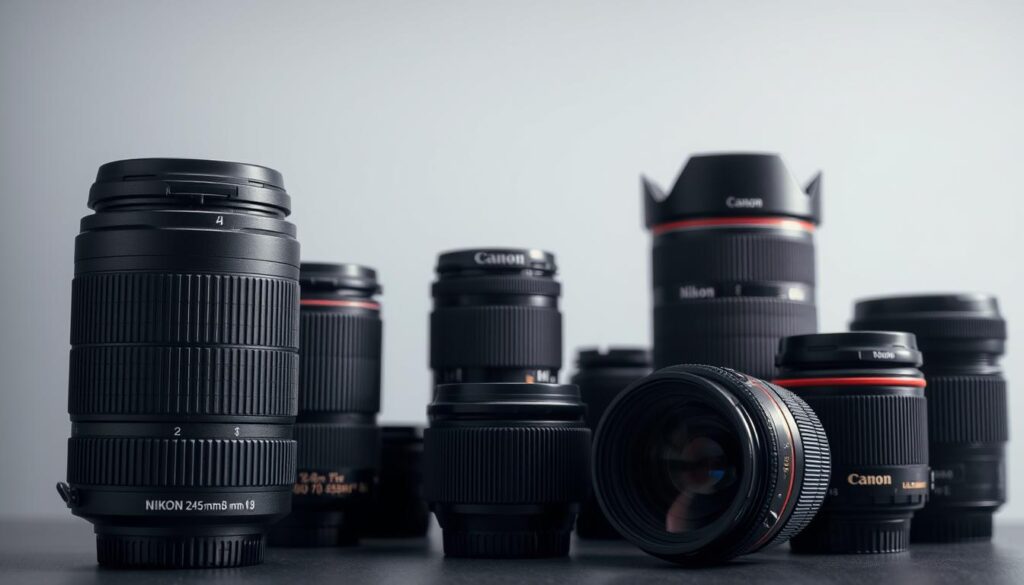
For videographers, silent aperture control is a significant advantage. This feature ensures smooth transitions in film projects, reducing distractions caused by mechanical noise. It’s particularly useful for capturing high-quality video in controlled environments.
Financial considerations also play a role. Dual-system users can maximise their investment by sharing glass across platforms. This flexibility reduces the need for duplicate purchases, making it a practical choice for budget-conscious photographers.
Creative flexibility is another key advantage. Each lens has distinct characteristics, such as bokeh quality or colour rendition. By mixing systems, photographers can experiment with diverse styles, enriching their portfolio.
Historically, certain lenses remain compatible across generations. This longevity ensures that older models can still deliver excellent results, even on modern Canon bodies. It’s a testament to the enduring quality of these optics.
| Advantage | Description |
|---|---|
| Optical Character Preservation | Retains unique lens qualities like sharpness and bokeh. |
| Videography Benefits | Silent aperture control for smooth video transitions. |
| Financial Efficiency | Maximises investment by sharing lenses across systems. |
| Creative Flexibility | Enables experimentation with diverse lens characteristics. |
| Historical Compatibility | Supports older lens models on modern bodies. |
Tips for Maximising Compatibility and Performance
Achieving optimal performance with cross-brand setups requires careful attention to detail. Whether you’re using adapters or mixing gear, these tips will help you get the most out of your equipment.
Start by ensuring your adapter is secure. Applying tape mods can prevent wobbling and improve stability. Regularly clean the adapter contacts to maintain a reliable connection between the lens and camera. This simple step can prevent connectivity issues and ensure consistent performance.
For heavy lenses, consider using tripod collars. These accessories distribute weight evenly, reducing strain on the camera mount. Balancing your setup is crucial for both comfort and image quality.
Testing lenses at multiple focal lengths is another essential practice. This helps identify any inconsistencies in sharpness or focus. Adjust your camera settings accordingly to compensate for any limitations.
Firmware updates are often overlooked but can significantly enhance compatibility. Check for updates regularly to ensure your system is running the latest software. This is particularly important for mirrorless setups, where firmware plays a key role in performance.
- Clean adapter contacts regularly to maintain connectivity.
- Use tripod collars for heavy lenses to balance the setup.
- Test lenses at various focal lengths to ensure consistent quality.
- Update firmware to enhance system compatibility.
- Optimise camera profiles for specific shooting scenarios.
Future-proofing your setup is also worth considering. As mirrorless systems evolve, adapters and lenses may require adjustments. Staying informed about new developments ensures your gear remains compatible with emerging technologies.
By following these tips, you can maximise the performance of your cross-brand setup. Whether you’re a professional or an enthusiast, these practices will help you achieve exceptional results.
Conclusion: Is Using Nikon Lenses on Canon Cameras Worth It?
For photographers seeking versatility, mixing gear can open new creative doors. While nikon lens canon setups are functional for manual use, professionals often recommend native lenses for critical work. Hobbyists, however, benefit from expanded creative options and cost savings.
Cost/benefit analysis reveals distinct advantages for different user groups. Amateurs find this way to experiment with unique optics, while professionals prioritise reliability and full functionality. Long-term system commitment is another factor to consider, especially with emerging trends in lens adaptation technology.
For those in film or specialised photography, adapted lenses can offer unique characteristics. However, investing in native glass ensures seamless performance. Budget-conscious users may find adapters a practical solution, but for critical projects, native lenses remain the gold standard.
In summary, using canon cameras with non-native gear is a viable option for creative exploration. However, it’s essential to weigh the benefits against potential limitations to make an informed decision.
FAQ
Can I use Nikon F-mount lenses on a Canon camera?
Yes, you can use Nikon F-mount lenses on Canon cameras with the help of a lens adapter. However, autofocus and electronic communication may not function.
What type of adapter is needed to mount Nikon lenses on Canon cameras?
A Nikon F-mount to Canon EF-mount adapter is required. These adapters vary in quality and features, so choose one that suits your needs.
Will autofocus work when using Nikon lenses on Canon cameras?
In most cases, autofocus will not work. You’ll need to rely on manual focus when using Nikon lenses on Canon bodies.
How does using a Nikon lens on a Canon camera affect image quality?
Image quality largely depends on the lens and adapter used. While there may be slight differences, high-quality adapters can minimise any negative impact.
Can I control the aperture when using Nikon lenses on Canon cameras?
Yes, but you’ll need to adjust the aperture manually using the lens’s aperture ring or through the adapter, depending on the model.
Are there any advantages to using Nikon lenses on Canon cameras?
Yes, it allows you to access a wider range of lenses and can be cost-effective if you already own Nikon glass. It’s also a great way to experiment with different focal lengths.
What are the limitations of using Nikon lenses on Canon cameras?
The main limitations include the loss of autofocus, potential issues with electronic communication, and the need for manual adjustments to aperture and focus.
How do I ensure compatibility when using Nikon lenses on Canon cameras?
Use a high-quality adapter, ensure the lens mount is secure, and familiarise yourself with manual focus and aperture control for optimal results.
Can I use Nikon lenses on Canon mirrorless cameras?
Yes, with the appropriate adapter, Nikon lenses can be used on Canon mirrorless cameras. However, manual focus and aperture adjustments will still be necessary.
Is it worth using Nikon lenses on Canon cameras?
It depends on your needs. If you already own Nikon lenses or want to explore different focal lengths, it can be a practical solution. However, be prepared for manual adjustments and potential limitations.
